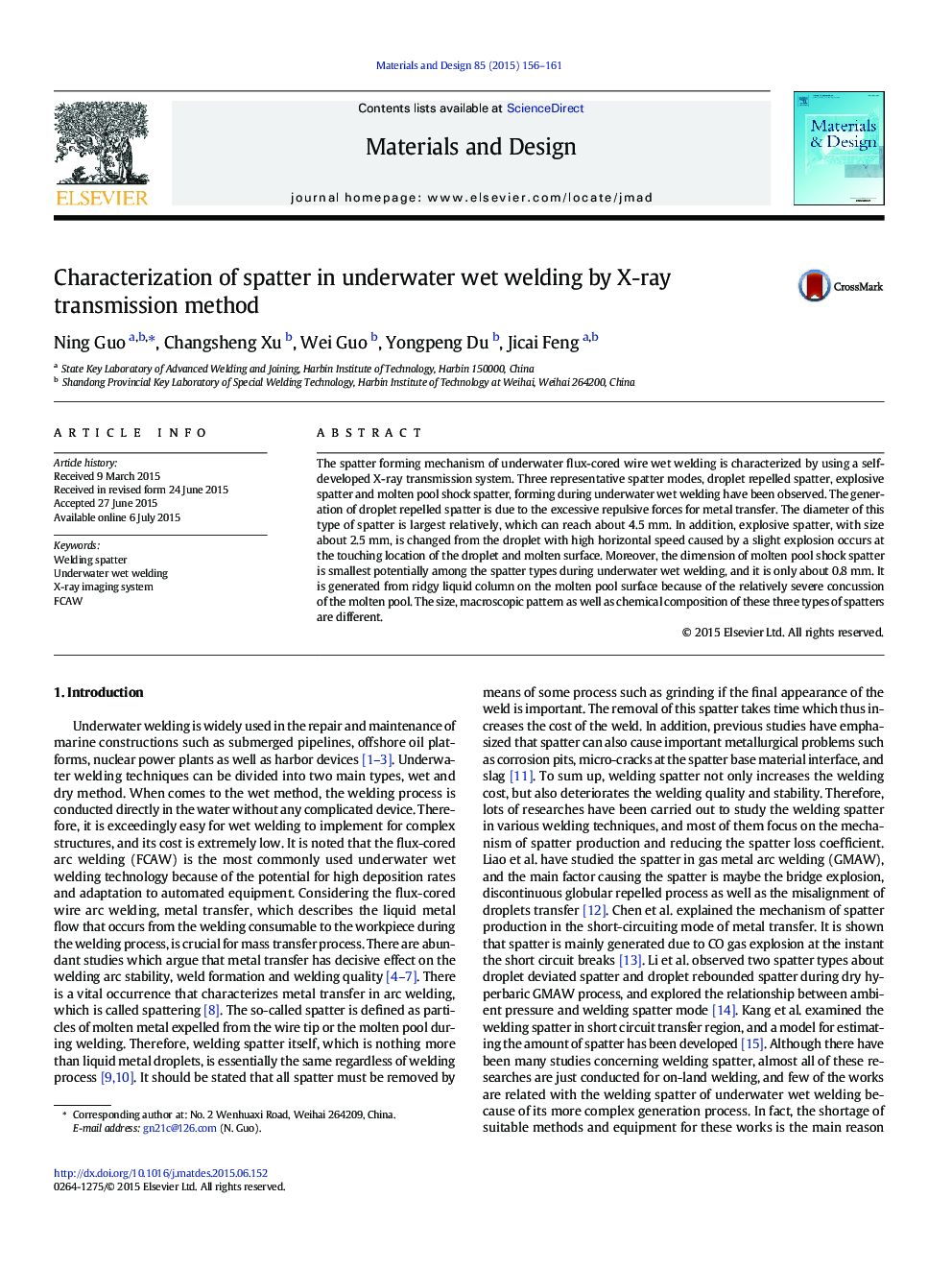| کد مقاله | کد نشریه | سال انتشار | مقاله انگلیسی | نسخه تمام متن |
|---|---|---|---|---|
| 828283 | 1470297 | 2015 | 6 صفحه PDF | دانلود رایگان |
• An X-ray transmission method is proposed to study spatter in underwater wet welding.
• Droplet repelled spatter, explosive spatter and molten pool shock spatter are classified.
• Droplet repelled spatter is caused by the excessive retention forces.
• Explosive spatter is induced by the explosion between droplet and molten pool surface.
• Molten pool shock spatter is caused by the concussion of molten pool.
The spatter forming mechanism of underwater flux-cored wire wet welding is characterized by using a self-developed X-ray transmission system. Three representative spatter modes, droplet repelled spatter, explosive spatter and molten pool shock spatter, forming during underwater wet welding have been observed. The generation of droplet repelled spatter is due to the excessive repulsive forces for metal transfer. The diameter of this type of spatter is largest relatively, which can reach about 4.5 mm. In addition, explosive spatter, with size about 2.5 mm, is changed from the droplet with high horizontal speed caused by a slight explosion occurs at the touching location of the droplet and molten surface. Moreover, the dimension of molten pool shock spatter is smallest potentially among the spatter types during underwater wet welding, and it is only about 0.8 mm. It is generated from ridgy liquid column on the molten pool surface because of the relatively severe concussion of the molten pool. The size, macroscopic pattern as well as chemical composition of these three types of spatters are different.
Figure optionsDownload as PowerPoint slide
Journal: Materials & Design - Volume 85, 15 November 2015, Pages 156–161
